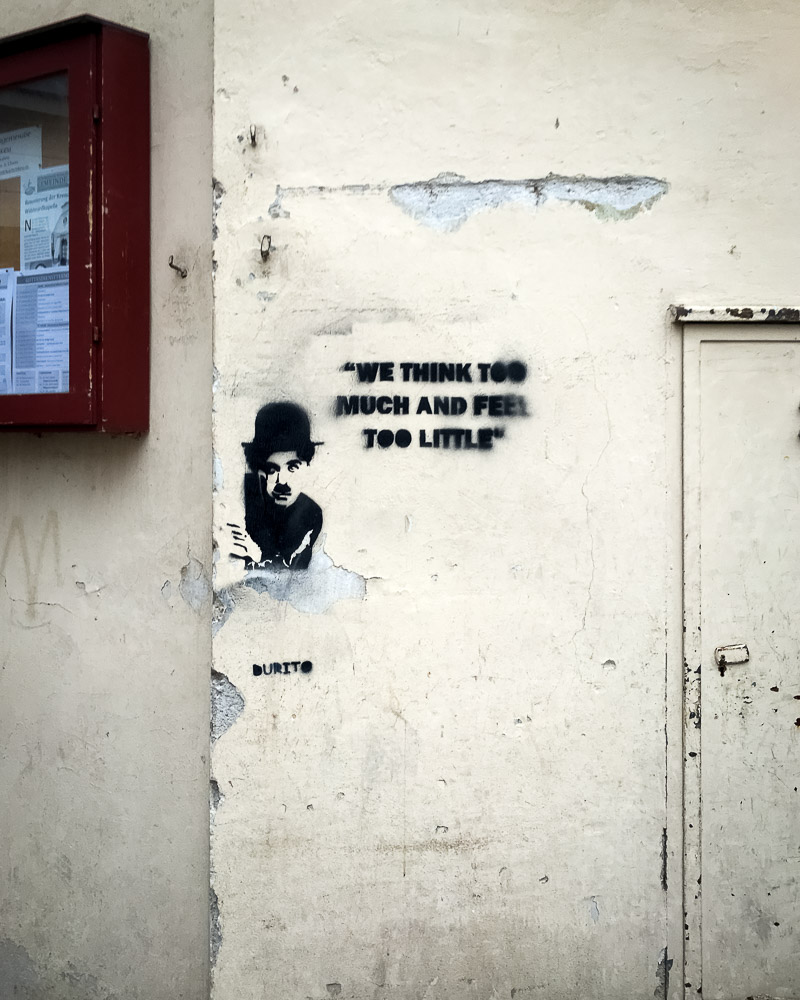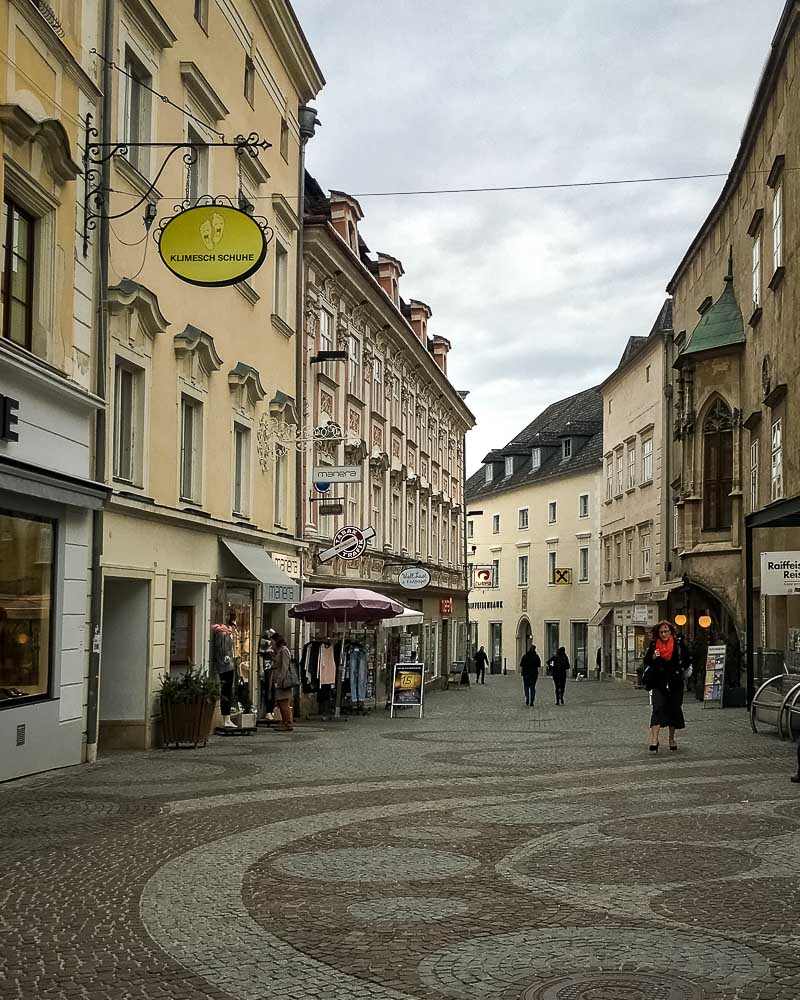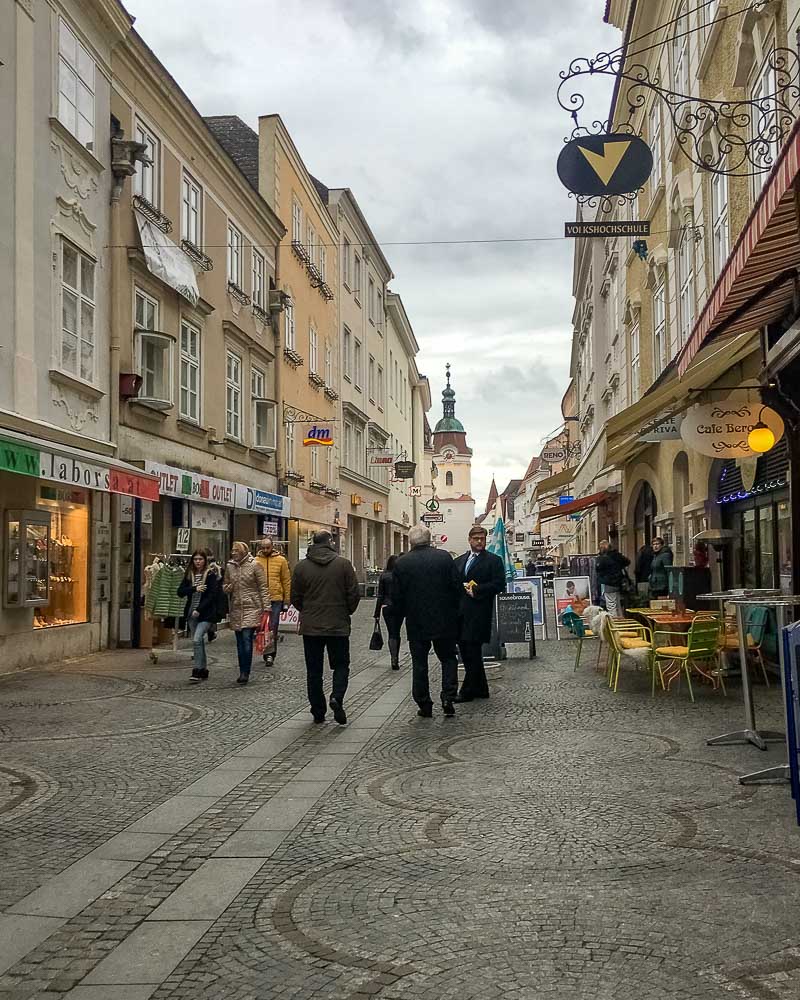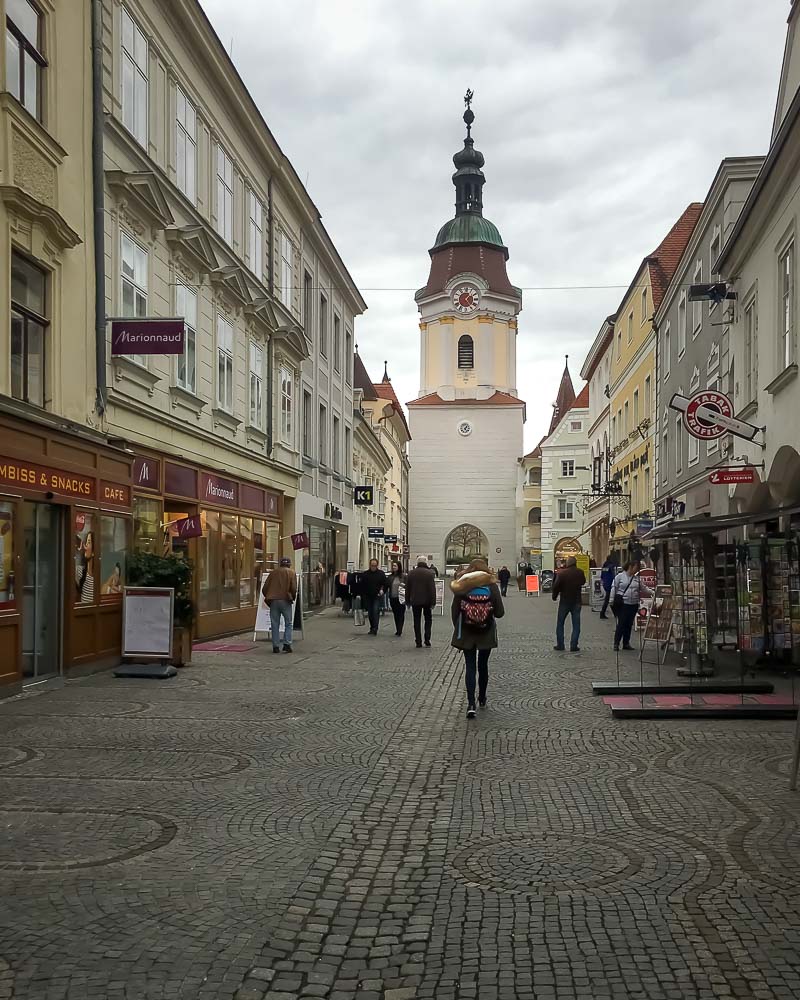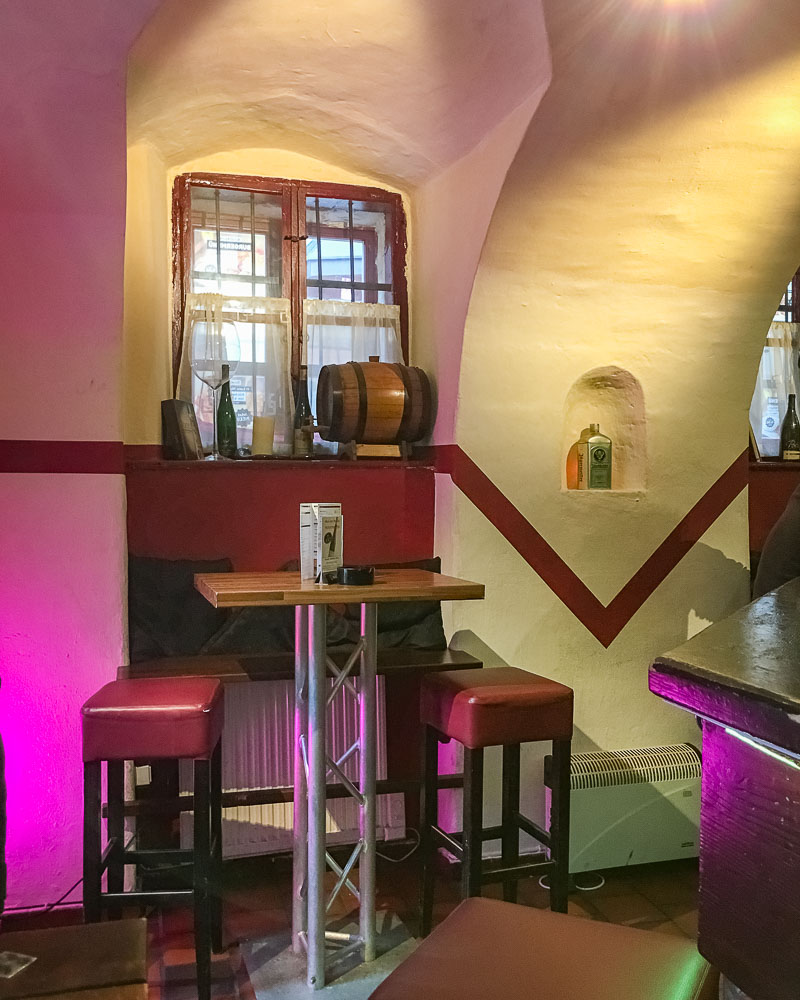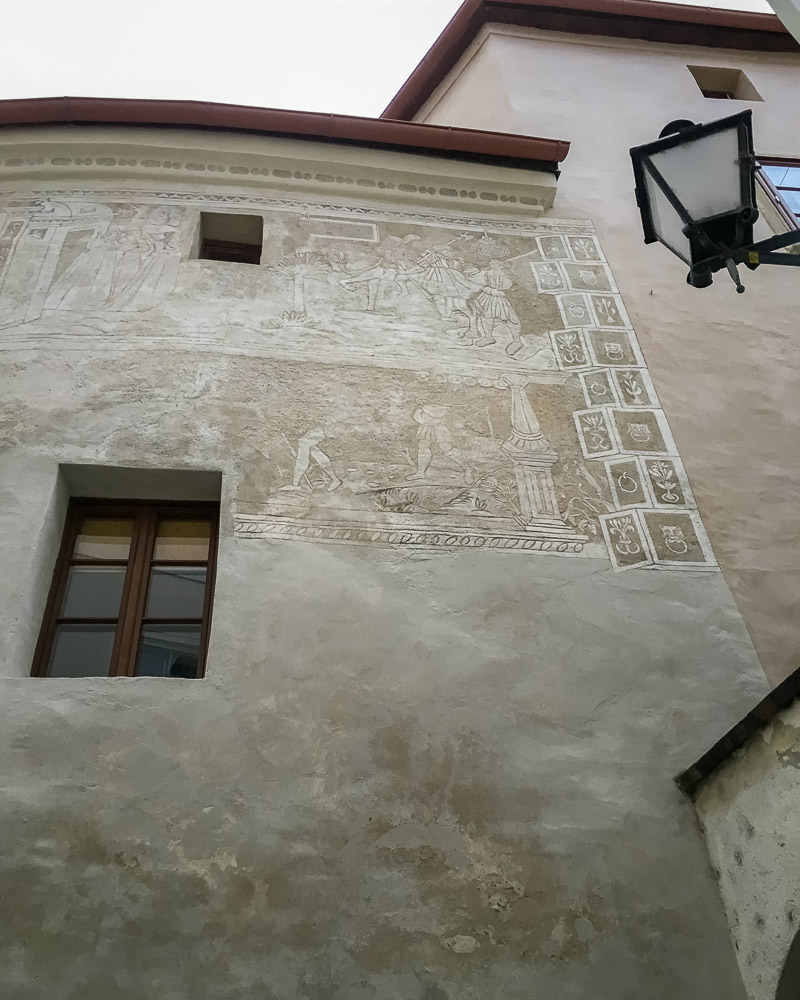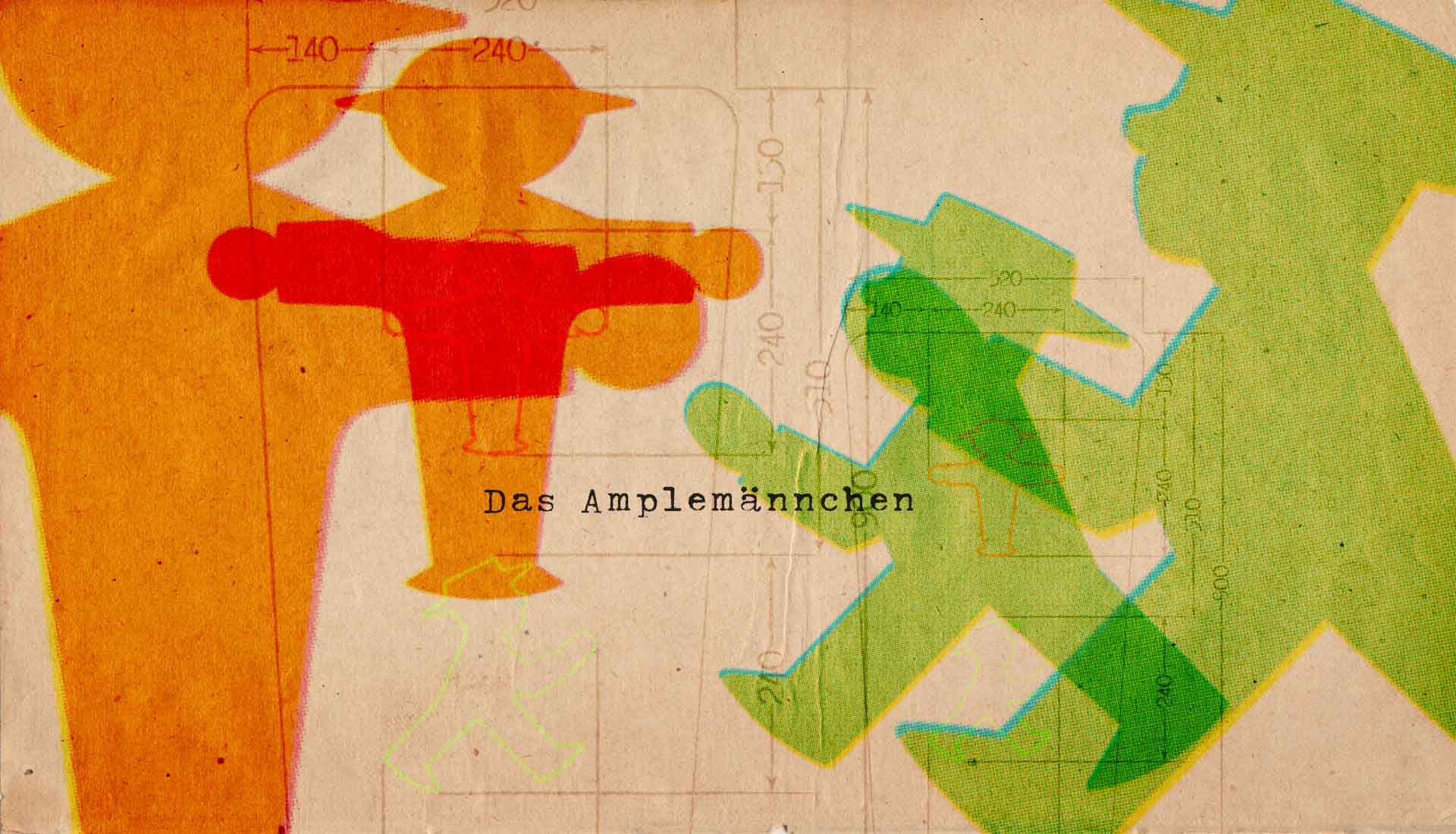oday is the day set aside to travel out of Vienna - Olaf says he would like to visit his old university town (Krems) and has invited me to go along. I accept and we set out on the almost hour long drive.
Krems has a long history – even before it became Krems. Indeed, in 2005, a 27,000-year-old grave of a child was discovered. This find dating back to the Ice Age is the oldest known burial site in Austria. Equally spectacular was the discovery of a 32,000-year-old female statuette: the oldest work of art in Austria found to date. The oldest settlements in the area were not permanently inhabited as warlike conflicts repeatedly drove Slavic settlers away again and again. Recent findings of Slavic settlements – especially in Krems and Stein – suggest a settlement continuity of the Slavs since the 7th century. During the 11th and 12th centuries, Chremis, as it was then called, was almost as large as Vienna.

Arriving in Krems, we park the car and set out to explore on foot. We are first met with the pedestrian shopping zone. We walk through looking at the goods set out on the street and the beautiful historic architecture.
We stop for coffee at a bakery that he recalls sitting for many hours with friends. As we drink our mélanges, he says that he can’t figure out what the lure was…why he spent all day here. Finishing up, we step back out onto the street and continue the steady walk towards the Steiner Tor.
The Steiner Tor is the preserved city gate of of Krems and is considered the landmark of the city. Until the last third of the 19th century, the city of Krems was surrounded by a ring of walls, which were systematically demolished and during which time the other three city gates were removed. For the 700th anniversary of the town’s charter, the Steiner Tor was restored as close as possible to its original state.
The area outside the gate was a flood zone and the city walls not only protected from invaders but also offered some flood protection. A memorial stone placed on the inner side of the Steiner Tor commemorates such a catastrophe, when in 1573 an ice surge caused a great flood. When the Danube had some regulation in place, the wall demolition began. Passing through the gate, we are on our way to Stein. In former times, there would have been only a monastery outside Krems – between Krems and Stein. But since the inclusion of Stein into “greater Krems” in the late 1930s, the distinction between the two cities has blurred.
After leaving the inner city and passing through the Steiner gate, we wander through the neighborhoods between Krems and Stein. We are starting to get hungry – the mélange having worn off. We pass the Karikaturmuseum – a museum for satirical art and is dedicated primarily to political caricature, humorous drawing, comics and illustration. Olaf remembers a monastery that served really good food and we head over in the general direction of Und Kloster. Unfortunately it is closed – no food yet.
On our way back from Stein, we detour through the university. Olaf points to a building – he says this was where he used to live. It was the second floor corner apartment…but also maybe the third floor. Passing an ornate gated green and white entrance, Olaf explains that the university used to be a cigar factory in the before time. Ah yes, I see the “Tabakwerke” on the sign. The factory dates from the middle of the 19th century which was greatly expanded in the beginning of the 20th century to occupy a large complex. Today it houses University.
Olaf tells me how there is a prison right next to the school such that when he walked to class, he would pass by the razor-wire topped outer wall (something never seen in the US). He wants to find the communication department but the building that once housed the communication department now is home to the medicine department. We continue to wander the hallowed halls – we are in search of two things…the communication department and food. Still searching for something to eat. The university has experienced much change since Olaf’s last time here – we never found the communication department…or food.
Now very hungry and back in Krems, we abandon the search for a restaurant and stop in a small mall with a grocery in it. Here we are able to get something warm from the deli – two Leberkäse sandwiches for Olaf and a Käseleberkäse sandwich for me – and something to drink. Settling on the steps outside, we are able to get some much needed rest and are able to eat our lunch. This is my second Käseleberkäse (I had one yesterday) and I can see that this will soon become my go-to meal while in Vienna. Much thanks Olaf for getting me hooked on these…
After some caloric restocking, we walk down to the Bistro de la Tour – a favorite “watering hole” of Olaf’s at which he explains he spent many an hour. We stop for a beer (for Olaf) and a wine spritzer for me. In front of the bistro is the last remaining section of the original city wall that had once ensconced and protected the town but had been razed during the last third of the 19th century.
After our drink, we continue our survey of Krems moving to higher ground to see a different part of the town. We weave our way upwards through winding alleys until we reach the top – a place called Gozzoburg (Gozzo Castle).
Gozzoburg is a high medieval town castle and is one of Krems’ most important buildings in the Gothic style. The building consists of an east and west wing connected by the original building. A late Romanesque, building from about 1235 forms the core of the castle. In 1320 the castle became part of the Habsburgs’ property, and, in the 15th century, it was frequently mortgaged. In 1477, during a siege of the town, the castle was damaged and rebuilt from 1484-1487. A general renovation and comprehensive revitalization of the castle in 2007 uncovered the oldest and best preserved profane frescoes in Central Europe depicting the legend of Barlaam and Josaphat – a very famous legend throughout Europe in the Middle Ages.
My favorite part of this area is a lone misshapen building to rival any that Dr. Seuss could have dreamed up. Verily, there was not a true wall in all of its sides and the base was bulging as if the very weight of the top layers has become much too much to bear over the course of the centuries. The colors it is painted makes me think the house is no longer marking time but is, instead, mocking time.
We find our way back down following different narrow winding alleys enclosed by tall buildings from various times in various architectural styles. Some of the buildings have their partially visible frescoes on display – I imagine they were beautiful in their former glory. Reaching the car, we head back to Vienna – it has been a long day of walking.



